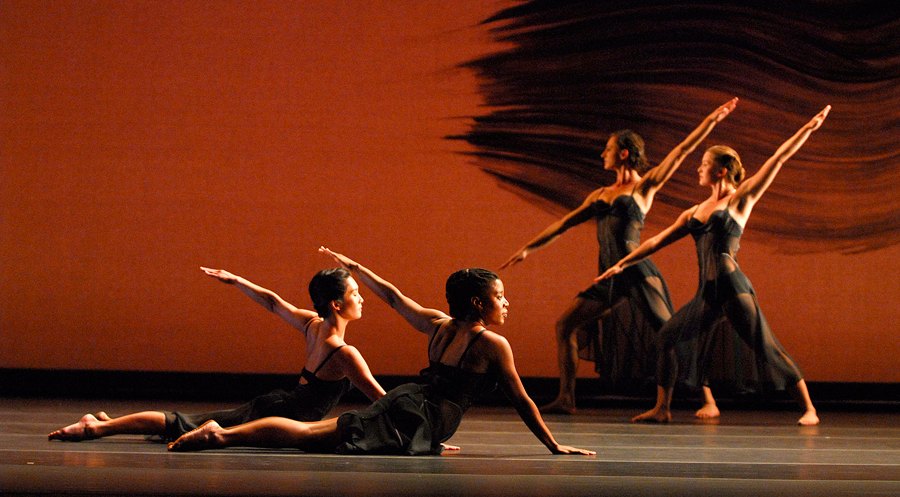
By the late 1980s, close followers of dance were already convinced that Seattle-born and trained choreographer Mark Morris was destined for greatness. In November 1988, on the stage of Belgium’s state theater le Monnaie/de Munt, the arts world at large discovered that greatness had already arrived, in the form of a two-hour-long dance setting of G.F. Handel’s little-known oratorio L’allegro, Il penseroso ed Il moderato.
Morris quickly followed L’allegro with a string of memorable works, but its sheer scale and extraordinary success with audiences not usually knocked out by either oratorio or modern dance soon raised the question which haunts all artists who achieve world renown at an embarrassingly early age: Would Morris ever make a work to rival, let lone match this stunning debut?
Years passed, and though Morris continued to pour out dances large and small, light and profound, the potential rival never arrived. Even Morris may have begun to wonder whether the art world’s striped socks would ever be knocked off so decisively ever again.
Then one summer evening in 2006, lightning struck again at Lincoln Center’s annual Mostly Mozart festival. This time the éclat was less blinding, despite the world having access to the event through a live broadcast of the work on PBS. Despite his fame and popularity, Mozart is a more “difficult”, less inherently popular composer than Handel. Morris’ musical choices for the three-part two-hour work were also more demanding: two three-movement piano concertos bracketing a lighter-weight experiment in stereophonic sound, the sonata for two pianos. No jolly words or nature-painting this time: just the sonority of keyboards and orchestra, and Morris’ abstract in-the-moment response to it.
Mozart’s music is noticeably recalcitrant material for choreographers. Many gifted ones have withered at its touch: watching their work, one is quickly aware that movement is irrelevant beside its genteel yet rigorous unfolding. Only two dance-makers have risen to movement and gesture that matches the music’s polished completeness. George Balanchine broke the seal by presenting a courtly ceremony set to the courtly ceremonial of the composer’s Divertimento no. 15, composed not for the concert hall but for a lavish party, complete with dinner, drinks and décor.
Morris goes the opposite direction. His dances feel like the reverse of Mussorgsky’s musical “illustrations” of evocative genre-scenes by the painter Viktor Hartmann. Howard Hodgkin’s backdrop of enormous dark choppy brushstrokes loom through curtains of intense color washes bathing the stage. The dancers seem etched outlines against them, their configurations echoing those of shadow-puppets in Balinese pantomime.
Part one, mostly for the women in black; and part three, for the full complement of 16 dancers in creamy beige suggestive of a wheat field stroked by the wind, each balance energetic and expansive painterly gesture.
Part two, set to the less-known jeu d’ésprit for two solo pianos, is very different: a blunt pyramid, opening with dazzling gymnastics for men, yielding to a kind of initiation ritual set in a cool blue-green vista right out of Matisse’s La danse.
Toward its end the women join, again preparing for a coming-together-as-equals finale set to the last movement of Mozart’s last, and most exalted, work in concerto form.
Mozart Dances is almost too much of a good thing. Unlike the easy-going brief movements of L’allegro, each an expressive bon-bon on its own, Mozart Dances has an architecture one can’t grasp as a whole on first encounter. You need time to decompress between viewings, to return with refreshed senses for a second encounter, this time informed with the numerous steps and motifs which emerge at key moments to point forward and back as the work unspools.
This 2014 video of the piece will be available for a full week starting at noon PST on March 12th, from the UW’s Meany Performing Arts site, But for COVID, we would be watching live performances of the work. But unlimited free access to such a dazzling work is a pretty good substitute.
In the meantime, a little preview:
Discover more from Post Alley
Subscribe to get the latest posts sent to your email.
